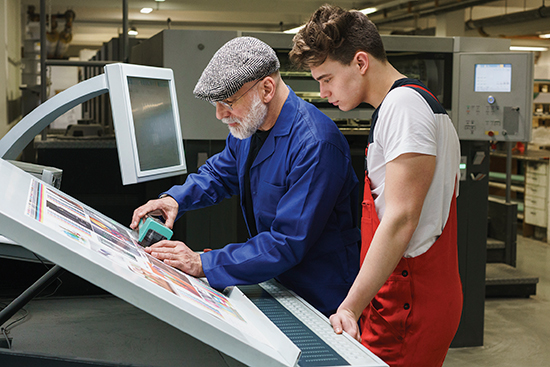
Diploma in Hand: Post-high school guidance from online school graduates
Post-high school guidance from online school graduates
Before a global pandemic reshaped education across America, many students followed the “expected” path: complete primary education, earn a high school diploma and transition into a career or further learning.
Now, after an unexpected year (or more) of online learning, many students are embracing more nontraditional routes for their education and considering new options for life after high school graduation.
A valuable first step for high schoolers is envisioning the future they want.
“Looking at different avenues and taking an interest inventory really help with the exploration process,” said Morgan Champion, head of counseling for Pearson Virtual Schools. “I recommend completing a career cluster interest survey, which are widely available online for free, to give guidance on which types of careers align to your interests and skills, such as a service-related or scientific field.”
Next, consider these choices and tips for preparing for life after high school from alums of fully online K-12 schools Connections Academy and Reach Cyber Charter School.
Keep Options Open for Different Paths
Beyond the traditional four-year college degree, there are many ways students can progress toward a long-term goal or successful career. Community or two-year college is an option for some because it’s often closer to home and tuition can be more affordable. Others enroll in a trade school or secure suitable jobs and step directly into the workforce. Some graduates enlist for military service while others take some time off to figure out their next step before making a move.
Keeping an open mind about all options is something graduate Angel Bennett supports fully. The flexibility of online learning allowed her to get a jump on her college education. She earned an associate of arts degree and associate of science degree through her local community college before graduating high school, giving her an edge in admission to her top choice four-year college. She now attends a private liberal arts college and is well on her way to a career fueled by a passion for clothing and inclusive fashion design.
The ambitious pace served as inspiration to Bennett’s younger sister, as well; Amber completed her own associate of arts and associate of science degrees as a 14-year-old high schooler and will start attending a private four-year university at 15 as she simultaneously completes her diploma.
Students should ask their high school about these types of dual-enrollment options.
Don’t Be Afraid to Act on Your Dreams
For some high school students, one of the most intimidating decisions to make is which colleges to apply to. However, law graduate Strider Kachelein, top of his undergrad class and top 4% in his law class at a prestigious institution, said to take that chance and apply to your dream school, even if you think you can’t afford the tuition.
Kachelein, who started online school in sixth grade, knows paying for college can be challenging for many high school students and their families. He recommends researching financial aid policies first and carefully.
“So many people believe they can’t get in and are shocked when they do,” Kachelein said. “Money can also be a big issue, but there are so many resources available, like the college match I applied to in high school. A key stat I also looked at while researching colleges was the school’s ‘percent of financial need met.’ There are a number of schools that will meet 100% of your determined financial need, which can make a world of difference. For example, at these schools, if your family is deemed unable to pay tuition, room or board then 100% of these expenses are covered by the school.”
High schoolers can reach out to their school’s college counselors to help navigate the application process.
Know It’s OK to Take a Break
Pausing in the middle of one’s education is a practice that’s more common in other parts of the world, but is growing in the U.S. According to data from Pearson, nearly 17% of U.S. high schoolers were considering a gap year, which enables the graduate more time to evaluate options and priorities, save money and plan for the future.
COVID-19 heavily influenced 2020 graduate Stormy Kaiser’s decision to take a gap year between high school and college. Choosing to accelerate her online curriculum allowed Kaiser to complete high school graduation requirements a year early, so even after taking the year off to realign plans the pandemic disrupted, she’s on schedule to enroll in a four-year college with her peers.
Take Advantage of Career-Related Coursework in High School
Nontraditional school models often offer nontraditional curriculum options, like career and technical education courses, that students can put to work right away. For example, Amya Meekins, who also graduated high school a full year early, took business classes at her online school that helped her learn about contracts, finance and other elements to successfully start and run her own business.
She now runs a boutique in addition to being a performer and motivational speaker. She’s also nearing completion of her second book, all as a 19-year-old undergrad pursuing her first college degree.

Consider Job Shadowing or Internships
Flexible scheduling is one of the most commonly cited advantages of online school among enrolled students. The extra free time can have big implications for students planning their futures, especially if they use the time to explore career choices.
That’s exactly what Becky Bressen did, shadowing a music therapist at the urging of her brother, who is a physical therapist. After initially feeling the career wasn’t for her and attending college with plans to become a music engineer and producer, a music therapy class made it into her course list, and it clicked for her. Right after college, she built a successful music therapy program from scratch at a hospice facility and finds her current role highly rewarding.
The Benefits of a Gap Year
When COVID-19 upended college plans for students across America, Stormy Kaiser knew she wasn’t alone. Even so, she never anticipated how using an unplanned year to regroup could benefit her future.
Initially, Kaiser planned to start her pre-med journey at New York University, but after seeing the effects of the pandemic in urban areas, she shifted focus. A year of recharging and self-exploration, writing short stories and volunteering took her in a new direction. She now plans to attend Baylor University, where she’ll double major in chemistry and mathematics as a pre-med student.
Due to her time management skills, personal diligence and involvement in volunteer opportunities, she was offered scholarships at many colleges and universities – a whopping $600,000 overall. She is now on her way toward becoming a neurosurgeon.
For more information about full-time online public schools, and tips for making post-graduation decisions, visit ConnectionsAcademy.com .
Source:
Connections Academy
Photos courtesy of Getty Images
















